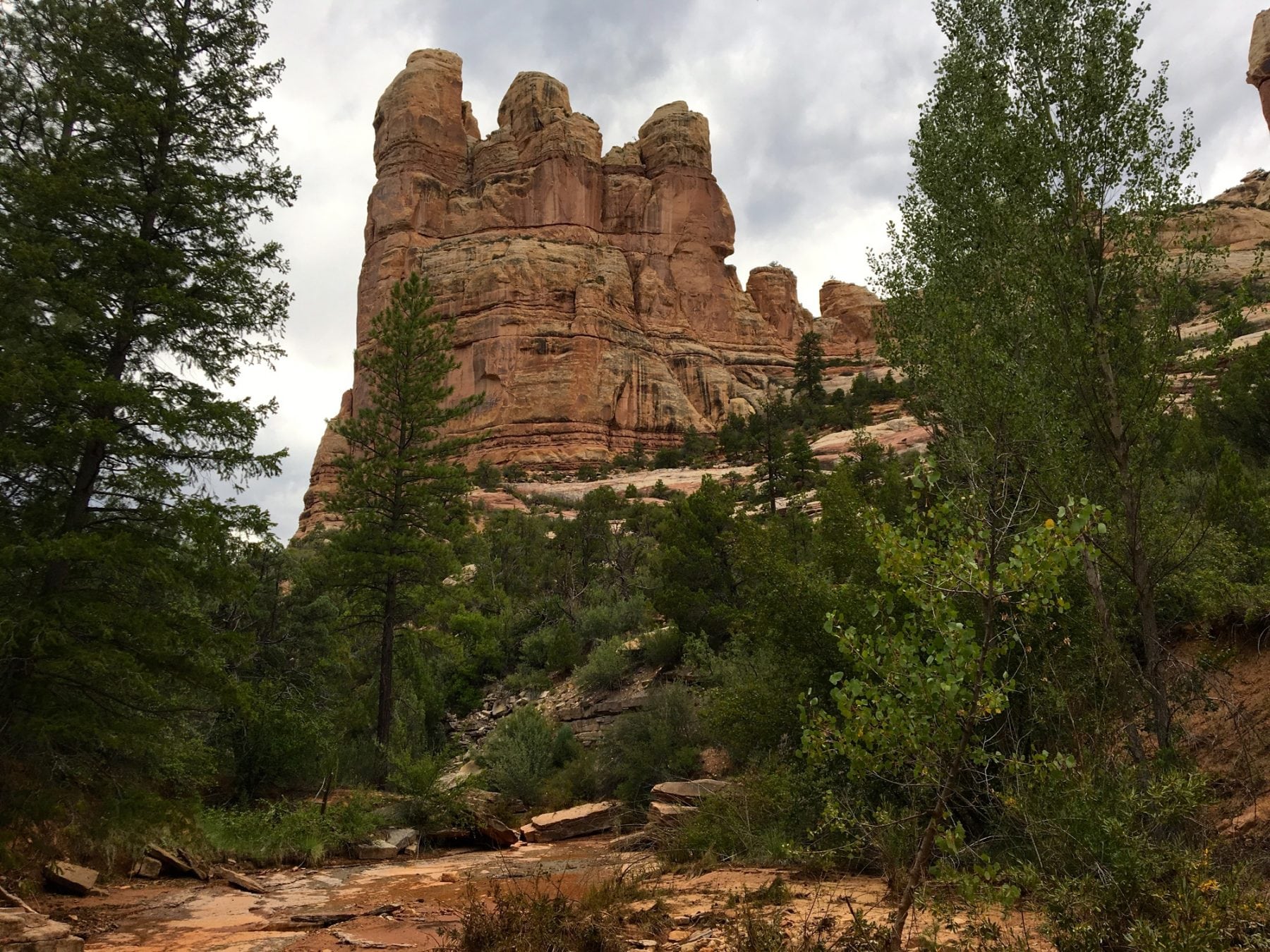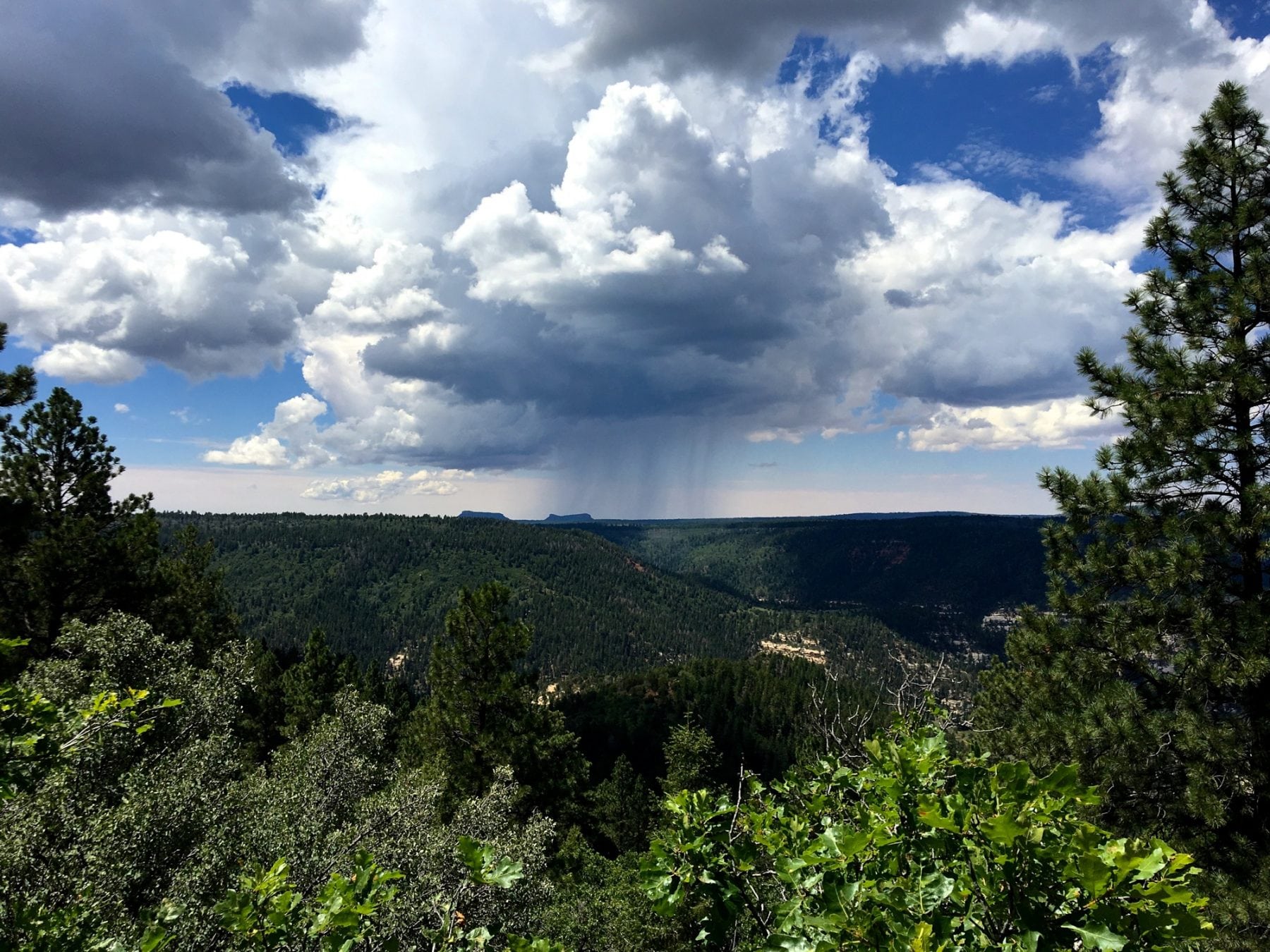When this article goes live, I hope that I’m still deep in the wilds of southeastern Utah’s canyon country. For years, I’ve dreamt of a long solo journey through the expanses of canyons and mesas that I gaze out upon from my home above Moab. When I’m home, my day-to-day runs are often adventures that buoy my spirit and give meaning to my days. I deeply love this country—it’s part of me and I want to become more a part of it.
For a few years, I’ve envisioned this long journey taking the form of a run connecting the La Sal Mountains on the flanks of which I live to the Henry Mountains that I can see towering nearly 100 miles to the southwest. Those visibly distant mountains, the last mountains in the lower 48 states to be explored by European settlers, draw me forth across what would be fantastic stretches of canyon country. That dream remains no less vibrant, but its call has been surpassed by the beck of Bears Ears National Monument (hereinafter simply Bears Ears), the newly established national monument, the northern boundary of which sits within a day’s run from home. Over the course of nine days, I intend to run from home to the monument’s north boundary and, then, traverse the heart of the monument from north to south. The total distance of this trip will likely be between 200 and 250 total miles.
What little I’ve seen of Bears Ears—Indian Creek, Elk Ridge, a sliver of Dark Canyon, Hammond and Posey Canyons—has been spectacular and expansive, but I’ve barely scratched the surface. I want more. Lots more. Give me Lockhart Basin, Lavender Canyon, the rest of Dark Canyon, Cedar Mesa, Grand Gulch, Owl Canyon, and Comb Wash. These are places spoken of with reverence by those who’ve visited them. There’s solitude, wilderness, unspoiled nature, fantastic geology, and more Native American cultural sites than could be described in a lifetime. These are unknowns that I want to see.
Undoubtedly, it is the wonder and wilderness that fill Bears Ears that moves me to make this trip, but the approach of the adventure and the trip itself will take me far into my personal unknown.
First off, the trip will likely take me about as far distance-wise as I’ve ever gone in one outing, on par with the 250 miles I covered two years ago at Ultra Gobi. I’ve felt good enough on some test runs with my pack, but I’m far from my peak… or, perhaps, even good fitness with nothing better than maintenance running since late April. Can my body handle this? I don’t know and won’t know until a few days into the adventure. While daunting, there’s also something thrilling about seeing whether or not one’s body is up to a task of simply moving forward for long periods.
Still, it’s not the distance that feels most unfamiliar or disconcerting. No, it’s the solo nature of the trip that feels like the largest leap into my unknown. Until this August, I’d never spent a night camping alone in the backcountry. I’ve camped a ton over the past decade, gone on multi-day backcountry adventures with Meghan, and spent the night alone in a hut in New Zealand, but, in my mind, that all feels quite different from spending a night alone in a tent or equivalent in the backcountry. Yeah, some folks are completely comfortable with this, but I’d bet a night sleeping alone in the woods gives most folks the heebie jeebies. I know it does for me. Even if more infrequent, the same goes for moving through a canyon or other trigger terrains, especially around dawn or dusk… and the effect only multiples when one’s alone. Can I overcome these primordial fears? I hope so!
Likewise, I’ve never taken such a temporally long trip on foot, with or without company, and that puts me far into uncharted territory in terms of equipment and supplies. Over the past two months, I’ve done tons of research on this topic—endlessly surfing online, chatting with Meghan about her experiences, reading Andrew Skurka’s hiking book, and more. It’s been a process that I’ve greatly enjoyed. That’s part of the reason for stepping into the known: learning lots and, then, putting that knowledge to the test. My past experience has informed my desire to keep my travel as enjoyable as possible by keeping my pack as light as possible. That’s resulted in lots of introspection regarding what to take based on my skills, knowledge, needs, and desires. There’ve been lots of tradeoffs and revisions. For instance, I’ll take an ultralight tent and air mattress, switch to a more robust water bladder, scale down my knife and compass, and leave my windshirt behind. Will my kit be perfect? Certainly not, but I think it’s adequate and will find out its strengths and weaknesses while I’m out there.
There’s also a large introspective unknown out there somewhere. The last time I had this breadth of headspace might have been running the Marathon des Sables in April 2009… during which I decided to quit my job as an attorney, sell my house, move across the country to live with Meghan, and start working on iRunFar full time. I look forward to seeing where my thoughts take me while I’m out there and what I make of them after the trip. That said, as someone who doesn’t often embark on deep introspection, I am a bit frightened about all this time in my head with my own thoughts. In reality, I’ll head out on this trip with a headful of thoughts and a bit of unsettledness that have been churning around for a long while without getting sorted out. As such, on this trip I’m likely to get more than a mugful of what’s been percolating in my head for a long time.
Finally, this is a trip into the unknown future of Bears Ears National Monument. I am ecstatic that last December President Obama designated 1.3-million acres of my home county of San Juan, Utah as Bears Ears National Monument at the unprecedented urging of a coalition of local Native American tribes. If Utah’s Grand Staircase-Escalante is the science national monument, then Bears Ears is the cultural national monument… with one heck of stunning setting to boot! Even so, the national monument is under attack. In response to a request from President Trump, Interior Secretary Zinke has recommended cutting down the size of Bears Ears and if his (still-secret) recommendation is anything like the state of Utah’s recommended cuts, then my run will largely be through areas the Executive Branch may try to pare from the national monument before much longer.
As a resident of San Juan County, Utah (in which Bears Ears National Monument sits in its entirety), I wholeheartedly support the preservation of Bears Ears at its current (or larger) boundaries. If you wish to help defend the monument, I strongly suggest following the Southern Utah Wilderness Alliance (SUWA) to stay informed, take action to support their efforts, and, if you’re able, make a donation. For more than three decades, SUWA has been an ardent and effective advocate for Utah’s wildlands, which have been and continue to be the front line for attacks on public-lands issues in the United States. Let’s do this!
If you wish, you can follow along with the remainder of my journey below. Regardless, I hope to chronicle the adventure on iRunFar in the coming months.
Call for Comments
Where have you most recently traveled into your unknown and what did it reveal—good and bad?
The Trip
If the map below isn’t working, you can click this link to go to the map on the SPOT website.




